Do you have a question about the Siemens MAMMOMAT and is the answer not in the manual?
Details on self-instruction packets or training workshops and required installation experience.
List of essential documents for maintenance, including guides, diagrams, and protocols.
List of necessary tools, measurement devices, and auxiliary equipment for maintenance.
Specification of lubricants required for performing maintenance procedures.
Explanation of text emphasis styles (DANGER, WARNING, CAUTION, NOTE) and their meanings.
Crucial safety information and preventive measures to ensure safe maintenance operations.
Definitions for abbreviations used throughout the maintenance manual.
Explanation of symbols, including the radiation warning symbol, used in the document.
Inspect radiation protection shield for damage and verify legibility of lead equivalent value.
Check C-Arm, tube cover, and table retain for damage, wear, and looseness.
Inspect power cable condition and verify smooth rotation movement of the C-Arm.
Inspect C-Arm wheels, rails, gas spring, and vertical drive for damage/wear.
Test limit switches for proper carriage stopping and blocking during vertical travel.
Ensure the vertical travel of the column stand is smooth and noiseless.
Inspect compression plates for damage, wear, fixation, and support integrity.
Test compression/decompression force and verify compression thickness display.
Verify the proper functionality of each foot pedal switch.
Check the protection circuit by initiating anode rotation in DEMO or manual modes.
Monitor control LED status for brake enabled states during rotation phases.
Recommendation to disable anode rotation brake for heavy use to reduce temperature.
Perform anode current calibration check in manual mode with specific mAs values.
Monitor control LED status related to filament operation and X-ray exposure.
Analyze kV waveforms and perform internal kV measurement using test points.
Measure external kV, check adjustment points, and perform kV calibration.
Verify HTPS Control LED status for fuse check and X-ray emission verification.
Test radiation field limitation as per Installation & Start-Up instructions.
Perform AEC Detector Sensibility test [r] with specified system configuration.
Check calculated dose values against calibration reports per service instructions.
Verify table functions, safety locks, and exposure release blocking conditions.
Test Emergency STOP on each side to ensure complete unit shutdown.
Perform image quality tests and compare phantom exposures to archives.
Check for operating problems and ensure all covers are fitted correctly.
Perform protective conductor test and clean unit/repair damaged paint.
Execute one final test exposure to confirm overall system functionality.
Details on self-instruction packets or training workshops and required installation experience.
List of essential documents for maintenance, including guides, diagrams, and protocols.
List of necessary tools, measurement devices, and auxiliary equipment for maintenance.
Specification of lubricants required for performing maintenance procedures.
Explanation of text emphasis styles (DANGER, WARNING, CAUTION, NOTE) and their meanings.
Crucial safety information and preventive measures to ensure safe maintenance operations.
Definitions for abbreviations used throughout the maintenance manual.
Explanation of symbols, including the radiation warning symbol, used in the document.
Inspect radiation protection shield for damage and verify legibility of lead equivalent value.
Check C-Arm, tube cover, and table retain for damage, wear, and looseness.
Inspect power cable condition and verify smooth rotation movement of the C-Arm.
Inspect C-Arm wheels, rails, gas spring, and vertical drive for damage/wear.
Test limit switches for proper carriage stopping and blocking during vertical travel.
Ensure the vertical travel of the column stand is smooth and noiseless.
Inspect compression plates for damage, wear, fixation, and support integrity.
Test compression/decompression force and verify compression thickness display.
Verify the proper functionality of each foot pedal switch.
Check the protection circuit by initiating anode rotation in DEMO or manual modes.
Monitor control LED status for brake enabled states during rotation phases.
Recommendation to disable anode rotation brake for heavy use to reduce temperature.
Perform anode current calibration check in manual mode with specific mAs values.
Monitor control LED status related to filament operation and X-ray exposure.
Analyze kV waveforms and perform internal kV measurement using test points.
Measure external kV, check adjustment points, and perform kV calibration.
Verify HTPS Control LED status for fuse check and X-ray emission verification.
Test radiation field limitation as per Installation & Start-Up instructions.
Perform AEC Detector Sensibility test [r] with specified system configuration.
Check calculated dose values against calibration reports per service instructions.
Verify table functions, safety locks, and exposure release blocking conditions.
Test Emergency STOP on each side to ensure complete unit shutdown.
Perform image quality tests and compare phantom exposures to archives.
Check for operating problems and ensure all covers are fitted correctly.
Perform protective conductor test and clean unit/repair damaged paint.
Execute one final test exposure to confirm overall system functionality.
The provided document is a maintenance manual for the SIEMENS MAMMOMAT Balance SP mammography system. This manual, identified by Print No.: SPB7-115.831.01.01.02 and dated 05.04, outlines the procedures for preventive maintenance, safety inspections, and quality checks.
The MAMMOMAT Balance SP is a mammography system designed for breast imaging. It incorporates a C-arm for positioning, a compression system for immobilizing the breast, an X-ray tube with a rotating anode, and a high-tension power supply to generate X-rays. The system includes various safety features and controls to ensure accurate and safe operation during examinations.
While the manual primarily focuses on maintenance, it provides insights into several technical aspects:
The manual highlights several operational aspects that are relevant to its usage:
The core of the document details extensive maintenance procedures, categorized into Safety Inspections (SI), Electrical Safety Inspections (SIE), Mechanical Safety Inspections (SIM), Preventive Maintenance (PM), Preventive Maintenance Adjustments (PMA), and Preventive Maintenance, Function Check, Operating Value Check (PMF).
Key maintenance aspects include:
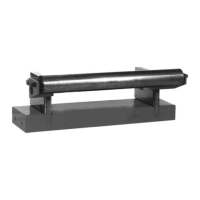
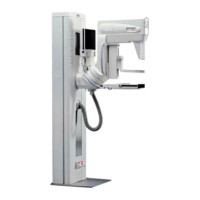

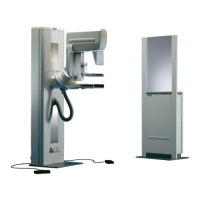

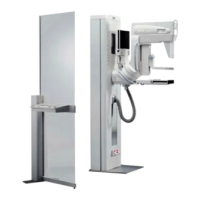


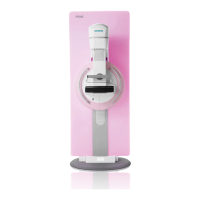

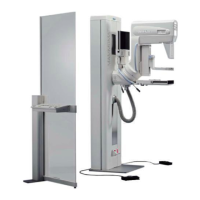
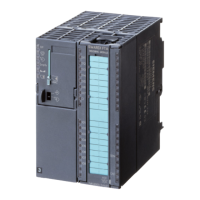
